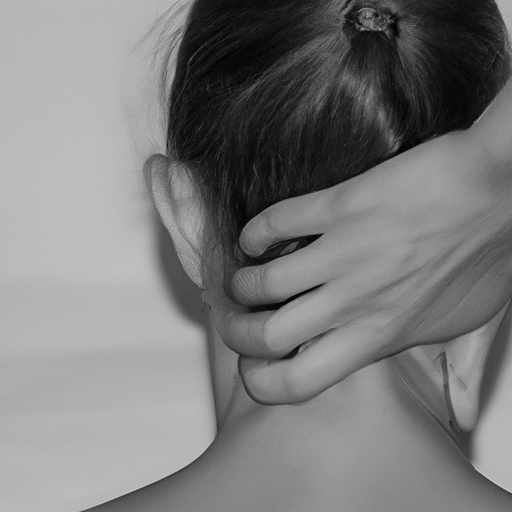The cervical-collar area, which includes the neck and upper back, is a common area of discomfort and pain for many individuals. Whether it is caused by poor posture, muscle strain, or even underlying medical conditions, the symptoms can range from mild discomfort to debilitating pain. In this article, we will explore the common symptoms, causes, and diagnosis of issues in the cervical-collar area. Additionally, we will delve into effective treatment options, with a particular focus on the benefits of massage therapy. Lastly, we will hear from experts in the field who will share their insights, tips, and techniques for properly treating the cervical-collar area. Whether you are seeking relief from chronic pain or simply looking to maintain a healthy neck and upper back, this article will provide valuable information to help you understand and address issues in the cervical-collar area.
1. Understanding the Cervical-Collar Area: Common Symptoms, Causes, and Diagnosis
The cervical-collar area, also known as the neck region, plays a vital role in supporting the head and facilitating its movement. It comprises seven vertebrae, numerous muscles, ligaments, and tendons, all of which work harmoniously to maintain stability and mobility. However, various factors can lead to discomfort and pain in this area, impacting our daily lives.
Common symptoms associated with the cervical-collar area include neck pain, stiffness, limited range of motion, headaches, and muscle spasms. These symptoms can vary in intensity and duration, with some individuals experiencing occasional discomfort, while others may face chronic pain. It is essential to understand that neck pain can radiate to other areas, such as the shoulders, arms, and even the head, causing additional discomfort.
Several causes contribute to the development of cervical-collar area issues. One primary cause is poor posture, especially in this digital age where individuals spend long hours hunched over electronic devices. This posture places excessive strain on the neck muscles, leading to muscle imbalances, tension, and pain. Other causes include muscle strains or sprains due to sudden movements or trauma, degenerative conditions like cervical osteoarthritis, herniated discs, and even stress.
Diagnosing cervical-collar area problems typically involves a thorough examination by a healthcare professional. The physician will evaluate the patient’s medical history, inquire about their symptoms, and conduct a physical examination to assess the range of motion, muscle strength, and any visible abnormalities. In some cases, diagnostic imaging tests such as X-rays, MRI scans, or CT scans may be recommended to identify the underlying cause of the symptoms accurately.
To effectively treat cervical-collar area issues
2. Effective Treatment Options for Massage of the Cervical-Collar Area
Effective Treatment Options for Massage of the Cervical-Collar Area
When it comes to treating issues related to the cervical-collar area, massage therapy has proven to be an effective and popular treatment option. This non-invasive and drug-free approach can provide relief from pain and discomfort, improve range of motion, and promote overall relaxation and well-being.
One of the most common treatment techniques used in massage therapy for the cervical-collar area is Swedish massage. This technique involves long, flowing strokes, kneading, and circular movements to target the muscles and soft tissues in the neck, shoulders, and upper back. Swedish massage helps to increase blood circulation, reduce muscle tension, and promote relaxation, making it an ideal choice for individuals experiencing stiffness or pain in the cervical-collar area.
Another effective treatment option for the cervical-collar area is deep tissue massage. This technique focuses on applying firm pressure and slow strokes to reach the deeper layers of muscle and fascia. Deep tissue massage can help release chronic muscle tension, break down adhesions, and improve mobility in the affected area. It may be particularly beneficial for individuals with chronic pain or muscle tightness in the neck and upper back.
Trigger point therapy is another valuable treatment option for addressing specific points of pain or tension in the cervical-collar area. This technique involves applying direct pressure to trigger points, which are hyperirritable spots in the muscle tissue that can refer pain to other areas of the body. By targeting these trigger points, massage therapists can help alleviate pain, reduce muscle knots, and restore proper muscle function.
In addition to the hands-on techniques mentioned above, massage therapists may also incorporate other modalities into their treatment approach for
3. Expert Insights: Tips and Techniques for Properly Treating the Cervical-Collar Area
Expert Insights: Tips and Techniques for Properly Treating the Cervical-Collar Area
The cervical-collar area, also known as the neck region, is a complex and delicate part of the body that requires special attention when it comes to massage therapy. To gain further insights into this topic, we have consulted with experts in the field who have shared their tips and techniques for properly treating the cervical-collar area. Here are their valuable insights:
1. Assessing the Individual’s Condition: Before starting any massage treatment in the cervical-collar area, it is crucial to assess the individual’s condition thoroughly. This includes understanding their medical history, any pre-existing injuries, and specific symptoms they may be experiencing. By conducting a comprehensive assessment, massage therapists can tailor their treatment plan to address the individual’s unique needs effectively.
2. Gentle Techniques: The neck region is highly sensitive and susceptible to injuries. Therefore, experts recommend using gentle techniques during massage therapy in the cervical-collar area. Slow and controlled movements, along with light pressure, are advised to avoid causing any discomfort or exacerbating existing conditions. Additionally, using the fingertips or the palm of the hand instead of applying excessive force with the thumbs can help prevent strain on the therapist’s hands.
3. Focusing on Muscles and Trigger Points: The cervical-collar area consists of numerous muscles that can become tense or develop trigger points due to stress, poor posture, or injuries. Experts emphasize the importance of identifying and targeting these muscles and trigger points during massage therapy. By applying specific techniques such as effleurage, kneading, and myofascial release, massage therapists can effectively alleviate tension, reduce pain, and improve mobility

